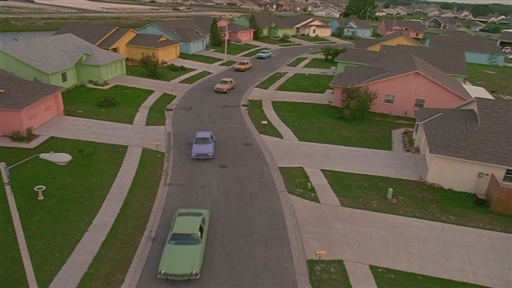http://video.google.ca/videosearch?q=waiting+for+godot&hl=en&emb=0&aq=0&oq=waiting+for+g#
A homesless man on a barren land stares at the sky, waiting for something, anything, or anyone. The sky is empty. Beside him, another homeless man fights to take his boots off, completely immersed in his own attempts in getting those damned boots off his feet! He sighs and says, "Nothing to be done" (of course, he was talking about the shoes swallowing his feet) and his friend turns to him and says, "I'm beginning to come around to that opinion" (and here, Vladimir is talking about salvation).
I remember reading Samuel Beckett's Waiting for Godot in my first year at UofT and with all honesty, I was bored to death and was looking for some excitement, some action, some blood and gore. It was a good thing that the total reading time lasted no longer than 1hour! It took a long time for me to finally realize Beckett's intention in writing such a play, but this realization came after watching this one minute section of the film adaptation.
When reading a book, the reader's imagination is working continuously and often strenously to create possible worlds which could aid them in better understanding or preferrably matching the author's intent for orchestrating their work. Personally, I found it difficult to place myself within the character's world. Yes, I was bored like the characters. I was looking for someone or something (Godot) to un-bore me. I felt connected to them in that sense, but there had to be more.
I then began imagining what it would have been like if I had seen Waiting for Godot on stage. Would it have a better effect on me? Would it finally make me say, "Ahh, I get it Beckett!". The answer: nope, definitely not. I'd probably find myself staring at the back of everyone's head, imagining what their faces look like.
The wonderful thing about film adaptations is that it enables its viewers to completely enter a new world with very little effort on their part. The set doesn't seem artificial. We can enjoy a film in the comforts of our own home with little distraction. Michael Lindsay-Hogg, the director of the 2001 film adaptation of Waiting for Godot, beautifully portrays our own individual quest in finding that something or someone to change our lives, whether we're anxious to fall out of the repetitiousness of every day living to finally getting a break from the mania happening all around us. The film's setting also enables us to wonder what it would be like when everything we've ever come to know is gone, taken away from us. We'd be left scurrying for Godot just like Vladimir and Estragon. We'd be left either wondering if the answers are written in the sky like Vladimir, or be left fighting for our survival like Estragon. The film made me realize that life is essentially this: it is a fight for survival and a time to wait for divine salvation.









